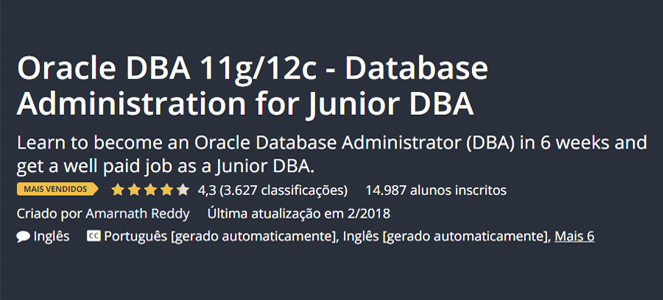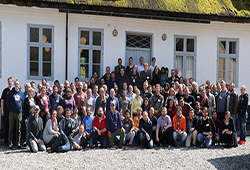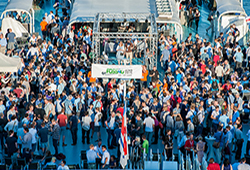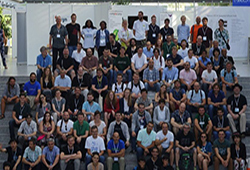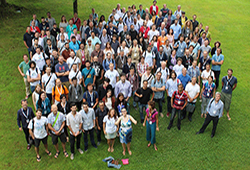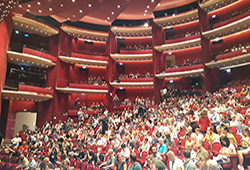Oracle DBA 11g/12c - Database Administration for Junior DBA
Learn to become an Oracle Database Administrator (DBA) in 6 weeks and get a well paid job as a Junior DBA.
'Oracle 11g/12c DBA' course follows a step by step methodology in introducing concepts and Demo's to the students so that they can learn with ease.
If you want to become an Oracle Database Administrator(Oracle DBA), this course is right for you!!!!
Almost in every organization, you will find Database Administrator's (DBA's) to maintain the organization's database. Becoming a good DBA depends on the knowledge you have in the overall architecture of Oracle Database.
In this course, I have covered both Oracle Database 11g and Oracle Database 12c so that you get to know the differences and can work in organizations, who are still in 11g.
Step by Step methodology followed is...
- Learn the fundamentals of database to set the stage for Oracle Architecture
- Understand the Process and Memory Architecture (This is important as understanding this will help you solve lot of critical performance issues).
- Install Oracle Database 11g & 12c (Manual method and using DBCA)
- Tablespace management to manage space to store the data.
- UNDO Tablespace management to manage undo space.
- REDO Log file management to manage redo space.
- Manage users and security
- Networking (Configuring Listeners and TNS entries)
- Understand various Data dictionary tables/views
- Diagnose issues using Diagnose data and generate packages for Oracle Support.
- Backup and Recovery (User Managed)
- Backup and Recovery (RMAN)
- Materialized Views
- Table Partitioning
- Project Work
Seção 1: Introduction
1. What is a Database?
2. Role of a DBA!!!
3. OLTP vs OLAP Databases
4. What is Oracle 11g?
5. What is Oracle 12c?
6. Database abc's
7. Undo vs Redo Data
8. Oracle Instance vs Database
Questionário 1: Quiz Time!!!
Seção 2: Oracle Process Architecture
9. Process Architecture
10. Database Writer Process
11. Log writer Process
12. Checkpoint Process
13. SMON Process
14. PMON Process
15. RECO Process
16. Archiver Process
Questionário 2: Quiz Time!!!
Seção 3: Oracle Memory Architecture
17. Memory Architecture
18. Database Buffer Cache
19. Shared Pool
20. REDO log buffer
21. Large Pool
22. Java Pool and Streams Pool
23. Keep Buffer Pool
24. Recycle Buffer Pool
25. nK Buffer Cache
26. Program Global Area (PGA)
27. Dedicated vs Shared Databases
28. PGA in a Shared Envrionment
Questionário 3: Quiz Time!!!
Seção 4: Architecture Recap
29. Architecture Full Picture!!!!
Questionário 4: Architecture Quiz!!!
Seção 5: Software Installation
30. Software Download...
31. Virtual Machine Installation
32. Linux Installation
33. Oracle Software Installation
34. Oracle Parameter Files
35. Database creation - Manual Method Demo
36. Verify Database creation
37. Database creation using DBCA (Preferred option)
38. Oracle Startup Steps...
39. Oracle Shutdown methods
40. Oracle 12c Upgrade
Seção 6: Tablespace Management
41. How data is stored in a Database?
42. Tablespace Concepts
43. Online and Offline Tablespaces
44. Let's create a Tablespace...
45. Let's add more space to the Database...
46. Tablespace Demo 1
47. Tablespace Demo 2
48. Tablespaces with different block sizes
49. Temporary Tablespace Management
50. Temporary Tablespace Groups
51. Extent Management (Local vs Dictionary managed)
Seção 7: UNDO Management
52. UNDO Concepts
53. Read Consistency
54. ORA-01555 snapshot too old error
55. Automatic Undo Management
56. UNDO Management
57. Configuring Undo Retention Period
58. Retention Guarantee!!
Seção 8: REDO Management
59. REDO Concepts
60. REDO Logfile Management Demo1
61. REDO Logfile Management Demo2
62. Archival Concepts
63. Archival Log Mode Demo
Seção 9: User Management
64. User Management Concepts
65. User Management Demo 1
66. User Management Demo 2
67. User Creation Exercise
68. Privileges
69. System Privileges Demo
70. Object Privileges Demo
71. Revoking User Privileges
72. Revoking System Privileges
73. Revoking Object Privileges
74. Let's practice what we learnt so far...
75. Role Management Concepts
76. Role Management Demo
77. User Profiles
78. User Profile Demo
79. Managing Passwords using Profiles
Seção 10: Oracle Networking
80. Networking Concepts
81. Listener Configuration Demo
82. TNSNAMES Configuration Demo
83. Database Link Concepts
84. Public Database Link
85. Private Database Link
Seção 11: Data Dictionary
86. What is Data Dictionary?
87. Static Data Dictionary Views
88. Dynamic Data Dictionary Views
89. Miscellaneous Data Dictionary Views
90. Data Dictionary Demo
Seção 12: Diagnostic Data
91. What is Diagnostic Data?
92. Automatic Diagnostic Repository (ADR)
93. Manually navigating through the Diagnostic Data
94. Automatic Diagnostic Repository Command Interpreter (ADRCI)
95. Using ADRCI to navigate through Diagnostic Data
96. Creating an Incident Package for Oracle Support
Seção 13: Backup and Recovery (User Managed)
97. Backup and Recovery Concepts 1
98. Backup and Recovery Concepts 2
99. Backup Types
100. Performing a Cold Backup manually
101. Hot Backup Steps
102. Hot Backup Demo
103. Recover a Control file from media failure
104. Recover a System Data file from media failure
105. Recover a non-system data file from media failure
Seção 14: Backup and Recovery (RMAN Backup)
106. RMAN Backup Types
107. Incremental Backup
108. Recovery Manager (RMAN) Terminology
109. Image Copies VS Backup sets
110. Why RMAN?
111. RMAN Commands
Seção 15: Database Objects - Materialized Views
112. Materialized Views Introduction
113. Materialized Views creation Options
114. Materialized Views with ON COMMIT option
115. Materialized Views with ON DEMAND option
116. Materialized Views with REFRESH FAST option
117. Timing the refresh
118. Query Rewrite functionality
119. Materialized Views Recap
Seção 16: Table Partitioning
120. Table Partitioning Introduction
121. Range Partition based on range of values
122. List Partition based on list of values
123. Hash Partition based on the hash key
124. Composite Partitioning by mixing things up!!
125. Interval Partition for automatic partition creation
126. Adding/Droping Partitions
127. Table Partitioning Recap
Seção 17: Project Work!!!
128. Project Work!!!
129. Where to go from here?

